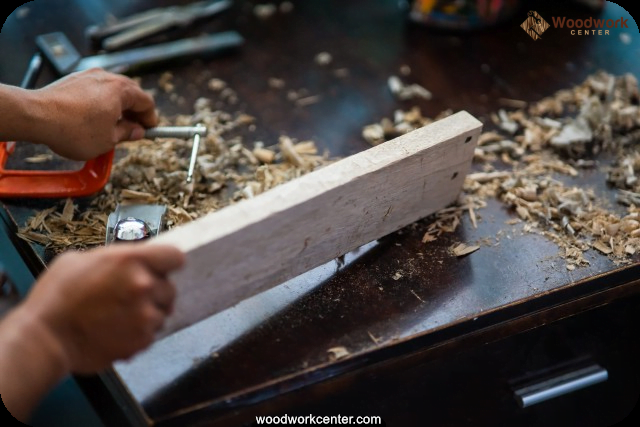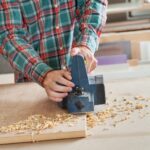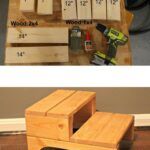Introduction to Woodworking Table Saw Jigs
Woodworking table saw jigs are tools designed to help users make precise and complicated cuts on a table saw while working with a range of materials. By using a jig, the user can ensure that any cut they make is as accurate as possible.
Table saw jigs are used to hold workpieces in place while cutting or to guide the cutter along a specific line. This type of tool is especially important when making joint connections like dovetail joints which require precise angles and lengths. Jigs also help keep a workpiece steady while it is being worked on, eliminating the possibility of it slipping during the process.
Woodworking table saw jigs are essential for getting accurate results when working with wood, ensuring that any cut made is exact and consistent with what was planned out before beginning the job. Woodworkers depend on their accuracy in order to complete efficient, high quality work. By using these tools, wood workers can save time, money and energy by reducing errors associated with cutting material by hand.
The Benefits of Woodworking Table Saw Jigs
One of the major benefits to using table saw jigs for woodworking is time savings. By using a jig, you can quickly accomplish repetitive tasks such as cross-cutting, dado cutting, miter cuts and molding profile cuts by simply inserting and locking the jig into the table saw’s miter slot. These same tasks, when performed without the aid of a jig, require more time due to the frequent setup and adjustments they demand.
The use of woodworking table saw jigs also ensures accuracy. Jigs provide reliable and repeatable results given their simple design which locks the workpiece in place against a registration surface or fence, making adjustment free cuts easy with precision each time.
Table saw jigs are also great for allowing creativity when performing odd shaping tasks or when doing intricate pattern copying on a workpiece such as dividing a large surface into equal spaces.
Lastly, table saw jigs add an extra level of safety because it allows you to spend less time handling tools and more time watching what is happening at your blade thanks to its personalized fit on your machine. Plus since most jigs consist of clear plastic or aluminum fences mounted to some form of pre-made template then line up correctly with a correct initial setup allowing limited potential for human imperfections which often lead to accidents.
How to Choose the Right Table Saw Jig
When selecting the appropriate table saw jig for a project, there are many factors to consider. Firstly, it is important to consider the kind of project that the jig will be used for. Some projects may require a more specialized jig than others. For instance, a project involving cutting curved edges and shapes will necessitate a different jig than one requiring straight cuts.
Secondly, taking into account the material being used is another key factor when deciding on a table saw jig. Different materials have varying qualities that may affect how they are cut and thus impact the suitable type of jig necessary. Certain hardwoods or very soft materials may require longer blades or different types of jigs in order to be worked properly. Therefore, it is important to be aware of what type of material will be used before deciding on a specific jig.
Finally, size should be taken into consideration when choosing between table saw accessories. The size of both the projects and the pieces being cut should be considered before investing in any extra tools. If bigger pieces need to be measured out accurately then it might require a bigger tool like an extension for your table saw and so it should be taken into account when getting together supplies for any job project requiring specialist cutting tools such as table saws and their respective accessories.
A Closer Look at Popular Table Saw Jig Types
Fence Jigs: A fence jig is used to increase the accuracy and speed of cutting boards. It consists of a guide rail attached to a miter slot, allowing you to easily make cuts that are straight and precise. These jigs are ideal for creating custom projects like crown molding and picture frames. Their ease of setup and use makes them one of the most popular types of table saw jigs.
Router Jigs: A router jig is designed for routing out arcs or circles in wood with precision and accuracy. They usually include an adjustable center support which pivots on its edge, allowing you to make circular cuts without any vibrations or wobbles. This type of jig is ideal for routing out dovetails, edges with intricate curves, etc., as well as for making circular cuts in thicker material than standard table saws can handle.
Miter Jigs: Miter jigs come in two types; a sliding miter jig or a stationary miter jig. Sliding miter jigs allow you to set up cuts quickly and accurately while keeping your hands free while pulling the board through the saw blade on a sliding motion. Stationary miter jigs are perfect for larger material where accuracy is especially important – they can be clamped into place for secure operation and require no adjustments between successive pieces. Common tasks achieved through using this type of jig include tenon joints, stops for dadoes, trim joints, compound angles, circle cutting, rabbets and slides within a dado cut ” making this jig very versatile!
Getting Started with Woodworking Table Saw Jigs
Using woodworking table saw jigs can be a great way to create accurate cuts in wood. Before beginning the project, it is important to understand how the jig works and how to adjust it for optimizing accuracy and speed.
First, check to make sure that the jig is level before placing a piece of wood into it. If the jig is not straight and level, the cuts may be off-center or uneven. It’s also important to make sure that all pieces used while working with a jig are of the same size and thickness. Pieces that are different sizes can cause incorrect measurements when using a jig.
Once everything is prepared for use, begin by slowly feeding the workpiece through at an angle. During each pass with the saw blade, move in one direction without jerking or stopping abruptly so that inaccurate angles are not created from movement. The speed of cutting will depend on what type of material you’re cutting as well as its hardness; for softer materials cut slower for more accurate cuts and for harder materials cut faster for faster results but less accuracy. Adjusting the angle of attack when making cuts will also help control tear out. With practice and patience, accurate results should become much easier over time!
Caring for and Maintaining Woodworking Table Saw Jigs
Woodworking table saw jigs should be cared for and maintained to maximize their longevity and accuracy. Properly caring for and maintaining your jigs is essential if you want the best performance from them. Here are some simple steps you can take to ensure that your jigs remain accurate and effective:
• Inspect the jig prior to use ” always check the condition of the jig prior to using it. Make sure there are no rusted parts or missing screws, bolts, or other components.
• Make sure all connections are tight ” when setting up a woodworking table saw jig, ensure all connections between components are made securely and tightened properly. This will help prevent potential mishaps.
• Clean all parts regularly ” wipe down all parts of a woodworking table saw jig with a clean cloth after each use to keep from accumulating dust and grime over time.
• Store in its original position ” make sure to store the woodworking table saw jig in its original position whenever not in use. This will help prevent warping or bending of the material as time goes on.
• Use an anti-rust spray ” spray metal components with an anti-rust solution once every few months to help protect against rusting caused by moisture in the air.
Following these simple steps will help ensure that your woodworking table saw has a long life while still providing accurate results. Taking care of your jigs can help make a huge difference in the end result of any DIY project!
Conclusion
Table saw jigs are an essential tool for any woodworker. They allow you to perform accurate cuts and make precise measurements, which can be extremely helpful in completing woodworking projects. With the right jig and a bit of patience and practice, you’ll soon have the skills and knowledge necessary for working quickly and accurately with the table saw. Knowing how to properly use the various types of jigs, such as featherboards, miter gauges, crosscut sleds, spline jigs, tenon jigs, sliding tables and router fences, is important if you want your projects to look their best. Each provides a level of control that isn’t possible with just freehand cutting. Using these tools will improve accuracy and save time in comparison to traditional methods of wood cutting. Investing in some quality table saw jig accessories is a great way to make your woodworking even easier and more rewarding.

Hi everyone! I’m a woodworker and blogger, and this is my woodworking blog. In my blog, I share tips and tricks for woodworkers of all skill levels, as well as project ideas that you can try yourself.





